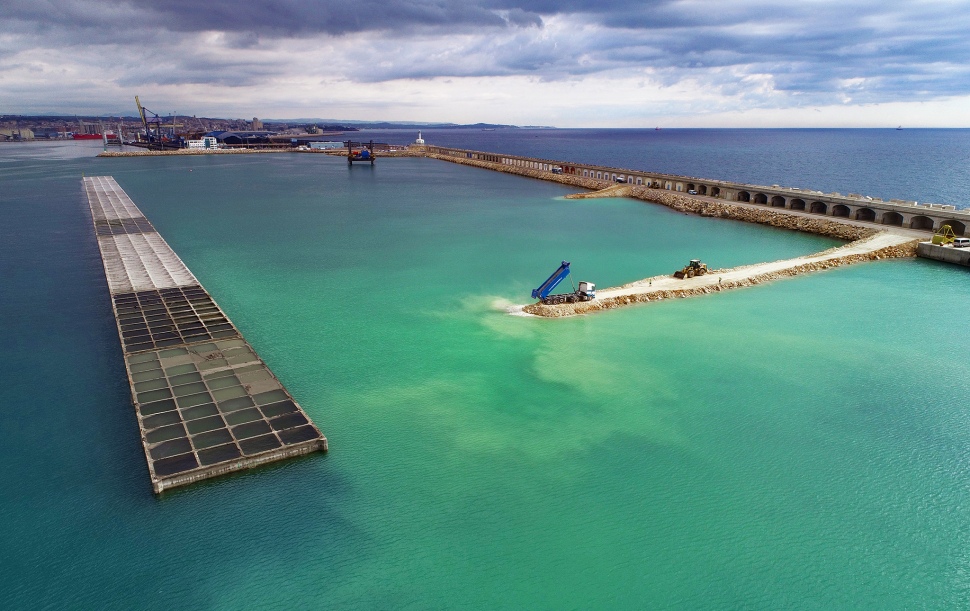The Port of Tarragona’s Balears Wharf enters into a new phase with the construction of the southern and northern breakwaters
-
Published in 2020
The two breakwaters are being built from the land and the sea sides
The Port of Tarragona’s Balears Wharf is entering a new phase with the construction of the southern and northern breakwaters. The two breakwaters will be built using both maritime and terrestrial resources. This new advance, having finalised the placement of all the caissons, will enclose the Balears Wharf on both sides and give it an easily recognisable form.
The barges continue their task of transporting and laying the rockfill from the Vallcarca quarry from the sea, while lorries transport the material from the quarries of El Llorito in Tarragona and El Blanco in Reus.
To date a total of 80,000 tons of rockfill has been transported in 3,000 lorry journeys. The lorries dump the material directly onto the breakwater, lengthening and widening it with every journey they make to the new wharf.
The task carried out from the sea consists of two 1,500-ton capacity barges bringing in 6,000 tons of rockfill a day. The barges are due to complete their part of the work in the coming weeks.
Characteristics of the Balears Wharf
The new Balears Wharf is altering the face of the Port of Tarragona. This new infrastructure has substantially changed the Llevant breakwater zone.
The total mooring line will be 700 metres long given that on 240 metres of its 460-metre length it will be possible to tie up vessels on both sides and add the Llevant breakwater zone. This will double the number of cruise liners that can dock simultaneously and will also be able to accommodate the world’s largest cruise liners.
This is a multipurpose wharf that is being built with the aim of accommodating different types of vessels and cargos, both now and in the future. It will first be used as a cruise liner dock, a phase that is expected to begin operation in the middle of next year. In the future, the new infrastructure will be able to expand its services to solid bulks and other types cargo.
